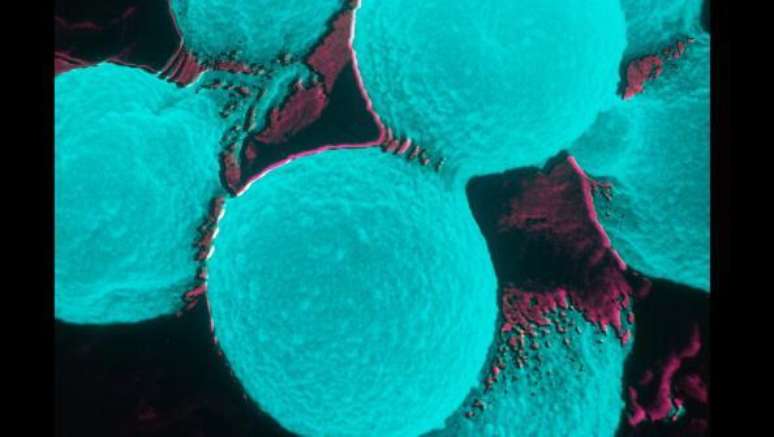Idea that gave rise to the gaming franchise for video games and the HBO series came from an episode of the series of documentaries “Planet Earth”, which shows scenes of a mushroom capable of transforming insects into zombies.
The second season of the series The last of usFrom HBO, he began to be shown Sunday (13/04). But did you know that the story was inspired by a real mushroom?
He was even portrayed in one of the episodes of the documentary Planet earthby BBC Studios, narrated by the British naturalist David Attenborough.
In fiction, history takes place in the post-apocalyptic future, in which civilization collapsed after a pandemic caused by a mushroom capable of controlling people’s minds and transforming them into zombies.
In real life, genres Cordyceps AND Ofiocordyceps They are able to invade the body of insects, like some ants, to control their nervous system and bring them to a higher place, where microorganism spores spread easily.
The similarities, however, are out there. This specific pathogen cannot do the same with human beings, although other representatives of the kingdom of mushrooms have become a concern in recent decades.
The origin of the idea
In the documentary section Planet earth This inspired the story, the scenes portray the ants found in a complicated situation: they had contacts with the parasite mushroom Cordycepscapable of infiltrating their nervous system.
“The infected brain directs the ant. So, totally disoriented, takes a branch with the jaw,” says Attenborough.
The victims of the ants of this mushroom are quickly identified by the companions who share the same nursery. So they are expelled from the colony.
“The attitude may seem extreme, but there is a reason for this. As in a piece of science fiction, the fruitful body of the Cordyceps It rises from the head of the ant, “continues the naturalist.
“Up to three weeks to grow can be needed. At the end, the spores are released. Therefore, any narrow ant will be under a great risk of death.”
The documentary also stresses that ants are not the only victims. There are different types of CordycepsAnd each specializes in the attack on a sort of specific insect.
Although this action seems dramatic, it is noteworthy that the role of these mushrooms is not bad at all: influencing some insects, the pathogenic agent guarantees a balance of nature, so that no type obtains an advantage over the others.

From reality to fiction
The series The last of us It is inspired by a video game games franchise that has been released in the last decade by the producer Naughty Dog.
In the interviews, the creators of history, Bruce Stuley and Neil Druckmann, said this episode of the documentary Planet earth The BBC was inspiration for the development of the post-apocalyptic universe.
In the games and in the HBO fiction series, however, the Cordyceps He had a mutation and began to hit humans.
The problem, in the plot, began in September 2013, by Foods contaminated by the mushroom from South America. In a few months, over 60% of humanity was killed or infected.
In the fantasy world, the infection for Cordyceps It has four phases. In the first, immediately after contact with the spores of the mushroom, the victim loses control over the brain and is super aggressive. Two weeks later, there is a loss of vision.
If the individual survives, the mushroom destroys the face (more or less like ants).
To compensate, the zombie develops a type of eco -mildness: it is able to guide you with the noises and small clicks that emits: it is not to be surprised, these beings are called “clickers” by healthy survivors.
In these phases, the bite of an infect is able to transmit the pathogen forward.
In the fourth phase, which can request up to a decade, the mushroom kills the guest and releases the spores, which can infect other people.

From fiction to reality?
With the success of the series, many fans have started asking themselves: a scenario in the style of The last of us Can it really happen?
The simplest answer to this question is no, it guarantees scientists.
“In the series, you have that image that puts the infects in a state of zombies, as if the mushroom had taken control of their nervous system”, contextualizes the microbiologist Marcio Lourenço Rodrigues of the Oswaldo Cruz (Fiocruz) Foundation in Paraná.
“In fact, there are infections of the central nervous system caused by mushrooms and can even induce behavioral changes in people,” he continues.
“But the glamorization of the series happens when the mushroom takes control of people. This is already science fiction,” adds the researcher.
Dr. Flávio says, of the Brazilian infection society, strengthens the potential of some mushrooms to invade the nervous system of humans.
“You CryptococcusFor example, they can cause a very serious neuromicosis with a high mortality rate, “he says.
“But they only cause these images in patients who have a very busy immune system,” adds the expert, who is also a researcher of the Federal University of Paraná.
You CordycepsTherefore, they are only a threat to ants and some other insects – and there is nothing indicates that they will become dangers for other species, such as humans themselves.
However, a phenomenon interpreted in the series is real and already happens in practice with other representatives of this kingdom of living beings: the development of resistance to heat and remedies available today.
“Our average body temperature, about 37 degrees, is a mushroom barrier, since the absolute majority of them cannot grow in these conditions”, teaches Rodrigues.
“But the diversity of fungal species in nature is enormous and suppose that everyone develops well in the 30 degrees. Now imagine that this average temperature increases a little, as is happening.”
“The vast majority of mushrooms will disappear, but those who have the ability to resist a little more will prevail and have a huge amount of nutrients at their disposal,” he continues.
“That is, gradually, the resistant mushrooms would have acquired the ability to survive at temperatures that get closer and closer to those of our body”, he thought, he
With this, explains the researcher, a microorganism that did not have a pathogen becomes a problem.
This is more or less what happened Candida AurisToday I am known as a superfungino who always becomes news when it appears in the hospital.
Finally, many of these microorganisms are gradually becoming resistant medicines and agricultural products that we have available to fight and create new antifungal compounds is not an easy task.
“This is a very serious problem because mushrooms are very similar to animals and vegetables. With this, it is very difficult to develop a molecule that is toxic for them and does not demonstrate the same effects on ourselves”, says the pharmacist Kelly Ishida, of the Institute of Biomedical Sciences of the University of San Paolo.

Despite the obvious differences between real life and fiction, Rodrigues believes that the series are like The last of us They launch light on a little known danger.
It is one of the authors of a work that reveals how mushroom infections are both common and neglected.
“It is estimated that over 1 million people are blinded every year due to the fungal keratitis [uma infecção ocular]. About 1 billion people have mycosis of the skin, which makes this disease a little less common than headaches and teeth decay. Mushroom spores contribute to the beginning of the respiratory tables in 10 million patients. In total, 300 million suffer from serious fungal infections every year in the world. Of these, 1.5 million dies “, calculate the text.
“Also so, financial support for fungal diseases is extremely low compared to other diseases that have the same mortality. For example, for each malaria pig, $ 1,315.00 are invested in research and development. The value is 334.00 for tuberculosis, 276.00 for diarrheal diseases and only 31.00 for the meningitis caused by meningitis caused by Cryptococcus“The authors estimate.
“Reports, documentaries and series help to attract attention to the problem and allow to recognize that mushrooms have a great impact on public health,” says Rodrigues.
“A fungal pandemic is unlikely, but not impossible. Therefore, we must always be prepared,” concludes the researcher.
Source: Terra
Ben Stock is a lifestyle journalist and author at Gossipify. He writes about topics such as health, wellness, travel, food and home decor. He provides practical advice and inspiration to improve well-being, keeps readers up to date with latest lifestyle news and trends, known for his engaging writing style, in-depth analysis and unique perspectives.








